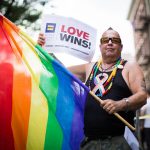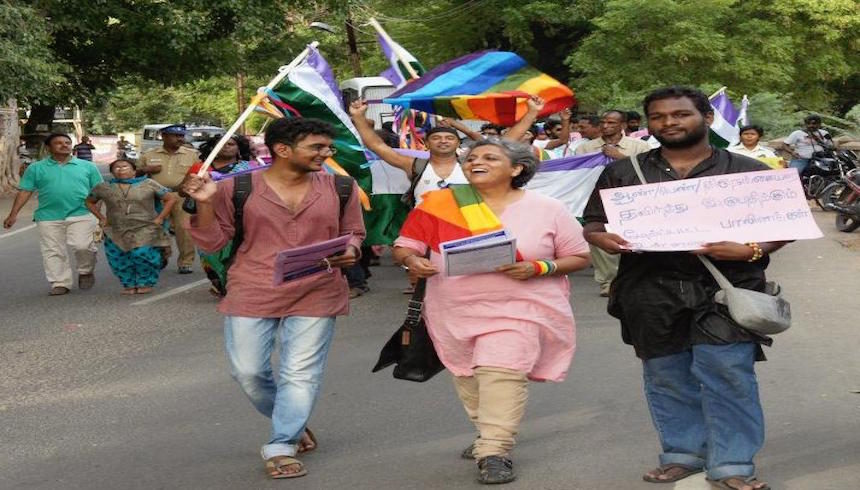Introduction to Transgenders:
‘Nature chooses who will be transgenders, individuals don’t choose it’ – Mercedes Ruehl
Gender of a person is usually assigned to them at birth. However, a small set of people incorporate traits of both male and female physiology. While some people have the means to undergo sex change operation, there are others who cannot. This perception of being a gender that is opposite of what is assigned to them creates a lot of legal and social implications.
However, gender identity is akin to self-identification. Self-identification is essential for transgenders as it enables them a life of dignity and freedom.
Transgenders are not a recent phenomenon:
They have been mentioned in various historical texts and have been documented in literature, long before even the European Dark Ages.
According to the recent recorded history, German sexologist, Magnus Herschfield coined the term ‘Transvestite’ in 1910. He developed an institute in Berlin that conducted the first sex change operation. ‘Transexual’ was coined in 1949 and ‘Transgender’ around 1971.
One of the earliest occurrence of transgender was recorded in 1728 when Chevalier d’Eon, a French spy and diplomat lived half his life as man and appeared in Queen Elizabeth’s court dressed as woman, claiming he had been assigned to be female at birth.
Transgenders are commonly referred to as Hijra in South Asia, particularly India. It is said that Hijras played a major role in the Islamic world. They held important positions in the Mughal era and were responsible for guarding Mecca and Medina. After the onset of the colonial era in India, the British criminalised the hijra community and denied them all civil rights. Therefore, Criminal Tribes Act, 1871 was passed. It was only repealed in 1952 by when it had already found a strong foothold in many local laws.
Transgenders have been humiliated and ostracised for years. A lot of transgenders are homeless, victims of acid attacks, injured due to being thrown out of trains while begging etc.
Landmark Case Law:
Delhi High Court had struck down Section 377, IPC that criminalises homosexuality in 2009.
However, the stand on Section 377 was reversed in a public interest litigation heard by the division bench of Supreme Court. It consisted of Justice K.S.Radhakrishnan and Justice A.K.Sikri in the case, National Legal Services Authority (NALSA) v. Union of India & Ors, wherein Section 377 was upheld as being constitutional.
Recounting the encounters of some Transgenders:
Laxmi Narayan Tripathi narrated her ordeal through a petition filed with an affidavit. Tripathi was born as male, was feminine in her ways and was often abused and molested both within and outside the family.
Revathi explained that in 10th standard she realised that the only way to feel normal was to join the Hijra Community. On finding out, her mother and brother had beaten her up with a bat. After which, she locked herself into the room and was rescued by her relatives. She has also written a book called ‘The Truth About Me: A Hijra Life Story.”
Sachin who is 23 years old, took more interest in the household work. She was teased by neighbours for staying home and behaving like a girl. She was humiliated to an extent of feeling suicidal.
Relevant laws:
The Court makes extensive references to various articles contained in:
(i) the Universal Declaration of Human Rights, 1948;
(ii) the International Covenant on Economic, Social and Cultural Rights, 1966;
(iii) the International Covenant on Civil and Political Rights, 1966; and
(iv) the Yogyakarta principles.
This is apart from the laws in force under the Indian Constitution:
(i) Article 14 that provides for equality;
(ii) Article 15 that prevents discrimination on the basis of religion, race, caste, sex etc;
(iii) Article 19 that provides everyone the freedom of speech and expression; and
(iv) Article 21 that provides everyone the right to life and dignity.
Extensive arguments were heard by the court including case laws such as Anuj Garg v. Hotel Association of India, wherein the Division Bench of the Supreme Court held that Article 21 includes personal autonomy. Personal autonomy consists of negative right of not being interfered by others and positive right of making their own decisions about their lives, their activities and about how they want to express themselves.
Decision:
Therefore, the court held that Transgenders were treated with respect earlier in India. They were ostracised by the Britishers after passing the Criminal Tribes Act, 1871. Even though the Act was repealed, the status of the transgenders has only marginally improved. They still do not have any civil rights and have been victims of economic and social boycott.
The court decided that transgenders are also citizens of this country and have full right to achieve their potential as human beings. For this reason, they are entitled to education, social assimilation, access to public places, and employment opportunities.
The court pointed out that the status of transgenders is not just a legal or medical issue but a matter of human rights that can be rectified by recognising them as third gender. It highlighted the role of society in removing the stigma attached to transgenders and their sexuality.
It observed that people have limited understanding about gender identity that is incongruent to their biological sex. This is the reason why the country is failing to make a paradigm shift towards recognising such citizens to have same fundamental rights and freedoms that other people enjoy.
Court’s Direction to recognise Transgenders as a Third Gender:
Therefore, the court passed several directions to the Central and State Governments with respect to recognising Transgenders as a third gender. Directed governments to pass social welfare schemes for transgenders’ education, sexual health issues such as HIV, removing social stigma attached to them, public awareness and attempts to reinstate the respect and position transgenders had in our society.
Transgenders in India have to wait more to see the light at the end of the tunnel:
In a positive step towards this goal, the Government of India has drafted Rights of Transgender Persons Bill, 2016, and sent it to the Law Ministry for their comments.
The Bill lays down that atrocities against transgenders such as forcing them to leave their residence/village, forcing them to beg, forcibly removing their clothes and parading them naked or any other kind of forced labor or atrocities against them shall be punished as criminal offense with an imprisonment of two years and fine. Also, transgenders shall be declared as backward class and provided reservation.
The bill was approved by the Union Cabinet under the chairmanship of PM Narendra Modi on July 20, 2016. However, the bill has been massively criticised by various experts and activists.
I got in touch with Vyajayannti Vasanta Mogli, who is a well known LGBT activist and transwoman from Hyderabad and Karthik Bittu who is a faculty fellow, University of Hyderabad, and a member of Telangana Hijra Intersex Transgender Samiti.
They along with their Trans-led networks/organisations/groups and allies have published an extensive criticism on the Rights of Transgender Persons Bill, 2016. They state that the changes/deletions made from the 2015 Draft Bill are regressive and dangerous.
Some of them are as follows:
1) The right to self determination of gender identity
The 2015 draft recognised the right to self determination of gender identity as being either male, female or transgender. Also, that transgender identity is not dependent on any medical/surgical intervention. However, the 2016 bill definition is not scientific nor allows self-determination of gender. Moreover, by defining transgender as a conflict between binary male and female identity, the bill has in fact reversed whatever progress the transgender community had achieved in the last few years.
2) System of Gatekeepers and Policing by District Screening Committee
Section 4(2) of the 2016 Bill recognises the right to self-perceived gender identity. However, Sections 6(1) and 8(2) provide for District Screening Committee for recognition of transgender persons. Also, the presence of a medical doctor in this Committee has been questioned as the judgment in NALSA clearly states that there will be no physical/medical assessment or hormonal or surgical procedure as a prerequisite for gender identification.
3) Lack of Trans Healthcare
While the 2015 Bill provided for free sex reassignment procedures. The 2016 Bill states nothing about setting up of Trans Healthcare Centres in Government Hospitals.
4) Confusing Intersex with Transgender Identity
A Transgender is a deep sense of oneself as a gendered being and it has no co-relation with sex. For example, a person assigned female sex by birth having all physical, physiological and chromosomal evidence of being female may not self identify oneself as female.
An intersex refers to the ways in which one’s sex is seen different from the binary idea of sex being male or female that is in terms of one’s chromosomes, hormones and external genitilia. Not all intersex people may identify themselves as transgender and vice versa.
People with intersex variations will need medical care if they choose it along with employment and non-discrimination. This is where laws for both transgenders and people with intersex variations intersect. Therefore, they want the Bill to be renamed as Rights of Transgender and Intersex Persons Bill.
5) No Caste Based Reservation:
The NALSA ruling had specified that transgenders would be considered belonging to OBCs and would enjoy benefits owing to them being OBCs and trans. However, the 2016 Bill has no provision for OBC or caste based reservation.
6) Discrimination in Employment has not beed addressed:
Section 10 and 12 provide for prevention of discrimination against transgenders in any establishment in matters relating to employment. Establishments having more than 100 workers shall have a designated complaint officer to deal with complaints. However, the definition of establishment under Section 2(b) of the 2016 Bill leaves out all the unorganised sector workers and transgenders working in establishments having less than 100 workers.
The activists demand for a provision that is as broad as the definition provided in the Sexual Harassment of Women at Workplace (Prevention, Prohibition and Redressal) Act, 2013, under which women working in establishments with less than 10 members, women in unorganised labour sectors including domestic work can lodge a complaint.
7) Discrimination/Unfair Treatment has not been sufficiently expanded:
The provisions do not protect transgenders from various hate crimes, offences and atrocities. It does not cover violence from law enforcement agencies, violence in public places, custodial violence, rape etc.
8) The Bill places Hijra families at risk
While, the 2015 Bill provided for rehabilitating transgenders who cannot be taken care of by their own families to his/her extended family or within the community in a family setting, the 2016 Bill provides that such transgenders will be placed in rehabilitation centres. This takes away the right of transgender people to live with their extended family or with people they love or choose to live with.
An elaborate criticism of the 2016 Bill by the Trans-led groups can be found HERE.
Picture Courtesy: Wikimedia







